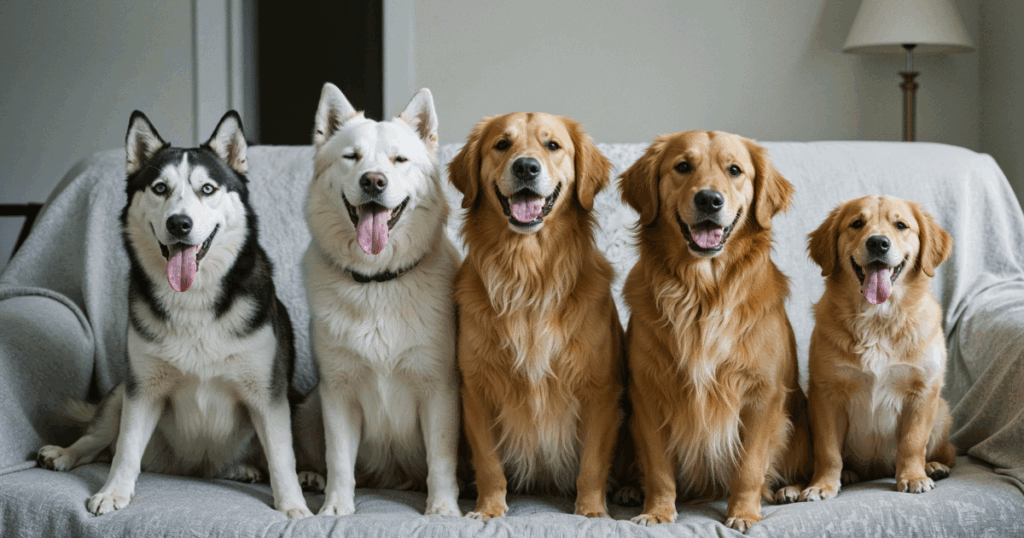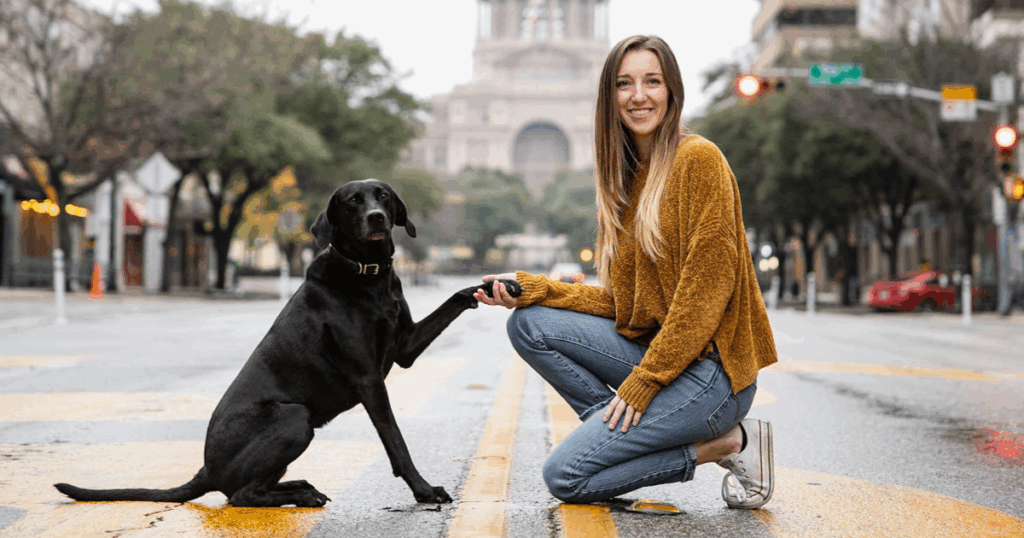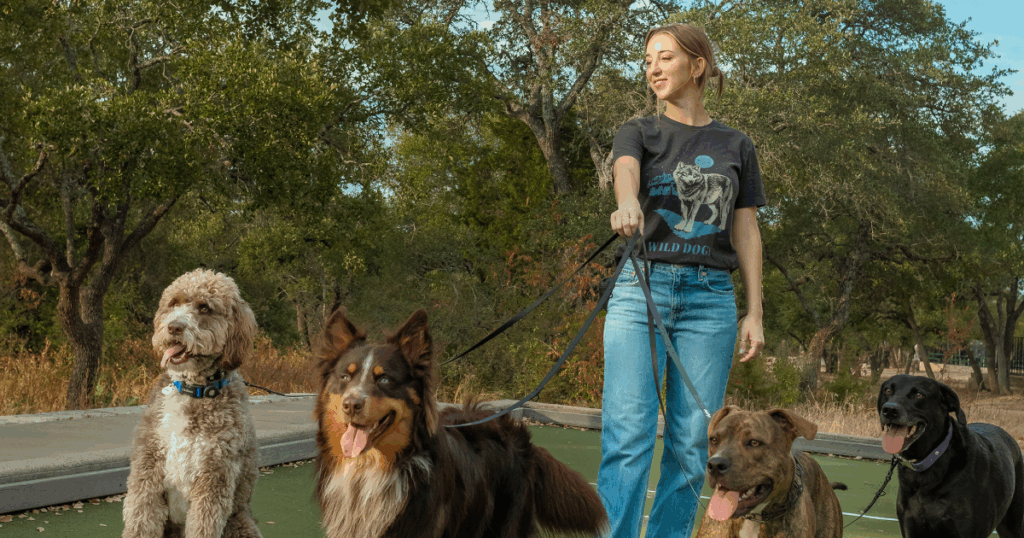We’re drowning in dog content, but Morgan Starr slashes through the muck with grit, knowledge, and a refusal to romanticize what it takes to raise a good dog.
Sometimes, it takes more than just treats and a belly scratch.
Clicking on the Wild Dogs Instagram, you’ll see many of the good, the bad, and the fuzzy regarding what to expect with dog ownership. Head trainer and business owner Morgan Starr is the central figure of the channel, and if there’s one thing you can count on with Wild Dogs, she’s gonna shoot you straight on why owning any kind of “doodle” might be a case of “do you understand what you’re about to get into here?”
We live in a world obsessed with dogs. A dog walks into a bar? (No, this isn’t the setup for a joke.) Everyone wants to say hello. Spot one in a cowboy hat, and people melt. Ask around, and you’ll find folks who can recite their favorite breed, dream about the dog they will get, and rave about their go-to pup-friendly hangout.
Social has Gone to the Dogs

Social media is overflowing with dog content, and the numbers prove it. (Or is it paw-rove it? I hate myself for that joke.) As of 2024, around 35% of pet owners have created dedicated social accounts for their cats and dogs, with canine influencers often pulling in more engagement than their human counterparts.
Top-tier pups like Doug the Pug boast nearly 18 million followers, while others like Blue the Husky and Titan rack up millions more across Instagram and TikTok. Beyond the celebrity status, regular dog owners are constantly posting, sharing, and discussing all things pup-related — from training tips to diet hacks — with “dog walks” and “dog food” alone making up over 90% of pet-related conversations on platforms like Reddit and X.
Whether it’s a Golden Retriever in a cowboy hat or a funny video of a dachshund in a blanket burrito, dog content isn’t just popular — it’s a cornerstone of online culture. Wild Dogs has 100K followers, and that’s nothing to shake a stick at (again, I hate myself).
Puppy Love

According to the American Veterinary Medical Association’s 2024 Pet Ownership and Demographic Sourcebook, 45.5% of U.S. households — approximately 59.8 million — own at least one dog. This makes the good bois the most popular pet in the country. The total number of pet dogs in the U.S. is estimated at 89.7 million. (Duh. Cats are fine. At best. I said what I said.)
And really, is anyone surprised?
Milan Kundera once wrote, “Dogs are our link to paradise. They don’t know evil or jealousy or discontent…To sit with a dog on a hillside on a glorious afternoon is to be back in Eden.” We don’t just love dogs — we need them. For peace, for comfort, for their unfiltered joy. Even Dean Koontz, a horror writer known for truly twisted tales, got soft about pups: “Once you have had a wonderful dog, a life without one is a life diminished.”
Meet Morgan Starr

For Morgan Starr, her love of dogs transcends the acceptance of needing a lint roller for your life. She’s a professional dog trainer and founder of Wild Dogs ATX, based in Hutto, Texas. With over a decade of experience, Starr blends behavioral expertise with content creation, using social media as both a business tool and an educational platform.
Her training philosophy is rooted in balanced methods — combining positive reinforcement with structured tools- and she’s unapologetically pragmatic in a dog world often divided by online opinion wars.
Speaking with Starr from her home office, I was surprised that my dog was the one who interrupted the conversation. (She’s an angel. But loves to bark at literally anyone who walks in front of her house when she’s on window watch.)
Mentioning how much my dog sheds, I had a lot of questions about how much hair she deals with daily. Spoiler: she swears by a robot vacuum — a must when you share your life with a golden retriever and a black lab. The lab’s coat is manageable, but her golden sheds make it seem like a full-time job. Luckily, her dogs-in-training have their own dedicated space: a separate room, yard, and occasional access to the office.
Living in a barndominium in rural Texas gives her just enough separation between home and work. However, she jokes that out in the country, you just get used to the constant swirl of dog hair, chicken feathers, and the occasional bit of bird poop — it’s all part of what she calls “country life.”
Her Dog Training Origin Story

“Originally, I wanted to be a veterinarian, but then I realized I didn’t like the idea of cutting into animals.” She started in the boarding world, where days were chaotic, dogs were often untrained, and burnout came fast. It left her thinking she might not want to work with animals.
But after a stretch of community college and watching The Dog Whisperer every day after class, she had a lightbulb moment: you could train the bad dogs to be good ones. A quick Google search led her to Starmark Academy in Hutto — one of the country’s few formal dog training schools — and her career began there.
She’s been training professionally since 2015 and hasn’t looked back.
Starr’s Training Philosophy

Staying the course with dog training is a complex issue, and Starr believes that e-collars are a powerful way to keep dogs focused on their behavior.
E-collars, or electronic collars, are among the most hotly debated tools in dog training. Critics argue they rely on pain and fear, potentially causing anxiety, confusion, or aggression in dogs, especially when misused or without proper conditioning. Many trainers and behaviorists advocate instead for positive reinforcement methods, backed by science as humane and effective.
Conversely, supporters claim E-collars, particularly modern ones with vibration and tone settings, are valuable tools when used responsibly. They point out that E-collars can be life-saving for serious behavior issues like car-chasing or aggression and allow for off-leash freedom with reliable recall.
Balanced trainers often take a middle ground, using E-collars not to punish but as a communication tool, like a tap on the shoulder, in combination with rewards and structure. Ultimately, the debate hinges less on the tool itself and more on the trainer’s philosophy and skill, the dog’s needs, and how the collar gets used.
Despite their love of dogs, she also loves making videos that people get excited about. “I like making content. I grew up where I was always making home videos, so I like filming on all our family vacations. I enjoy the editing process, although it gives me quite a headache most days. But I’ve always enjoyed Creation stuff in general. So I was like, ‘Well, I love dogs and I like making funny videos.’ So, being able to put those two together helps my business grow. It was a win.”
She continued, explaining why her videos work. “The biggest thing I’ve learned? Cut more out. People want bite-sized content, not a textbook.”
How Social Media Became Part of the Business

Social media became a cornerstone of her business not out of vanity but of necessity: “I was cheap and didn’t want to pay for Google ads.” What started with a viral video of her lab bringing in a dead rabbit has since evolved into a global presence, with clients from Canada to Spain discovering her through sharp, useful, and authentic training content.
Now Starr is a social media guru who tries to explain the nuances of dogs and the breeds to consider with a lot of care, including huskies. Huskies are sassy and have thick coats, not ideal for a state that regularly hits 100+ degrees eight months out of the year. Nor are they dogs that want to chill. “The right dog for you depends on your lifestyle, not how cute the breed is. Huskies look cool — but they’re chaos in Texas.”
Starr, for her part, was a stan of labradors and golden retrievers. But, she made it clear that all dogs were cool with her, “I realized you can make the bad dogs good dogs,” — a crux of her training methodology. But with a laugh, she concluded, “I like dogs more than people. They’re easier.”
Happy Tails

When I asked her what made her happy, she said it wasn’t taking a vacation or spending money on the finer things in life; instead, it always came back to the four-legged loves of her life.
“What makes me happy? Helping more dogs than just the ones in my zip code.” But that idealism does come with a price: people. Everyone loves dogs, remember? “I don’t need to tell everyone I’m a dog trainer. Sometimes I just say I’m a business owner so I don’t get stuck seeing 50 dog pics at a party.”
Can you imagine? That’s a lot of stories, photos, and advice. Some day, it’s easier to say you’re a corporate accountant.
Despite her online success, she keeps a grounded perspective on burnout, content strategy, and the responsibilities of sharing dog training advice in the internet age. “Dog training is a lot like parenting — everyone thinks they’re doing it the right way, and everyone thinks you’re wrong.” She admits that the comment section can be brutal. But her north star is helping dogs and those who love them succeed.
Just remember: dogs can be sassy, especially huskies.












